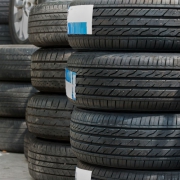Type of Tyres- a Woman’s Guide
Table of Contents
Types of Tyres

A Women’s guide about tyres and helpful tips
Not all Type of Tyres are created equal. Yes they are all around—at least they should be if they are in good condition. But there are a variety of Type of Tyres for a variety of uses, situations and road conditions. So before you buy just any tyre, buckle up, listen up and learn a little more about tyres for your car and safety.
Summer Tyres
These are the standard type of tyres that are supplied on most vehicles when we purchase them. They are all Type of Tyres that can handle well in both average wet and dry conditions.
The water channels that you see in the tread area of the tyres allow for normal traction (meaning they grip the road in normal summer weather); during rainy weather, they can cope with average-type rain fall and the spray that is associated with this.They are the average Type of Tyres for normal weather conditions. This type of tyres will be on the car when you buy a new one.
All Terrain and Off Road Type of Tyres
If you’re a woman who likes to use her vehicle for off-road driving regularly,. These would be the tyre for you. These are usually fitted onto mostly SUVs and light trucks. Of course, such as Land Rovers. About tyres explains the fact that sidewalls of these types of tyres are stronger than the summer tyres.
Featuring large tread block patterns that deflect mud and slush from the contact patch. Improving grip on loose sand or gravel. Hence, when you go on your off-road excursions,. The best type of scenario for these type of tyres would be one that the farmers wife may use.
Winter Tyres
If you are in an area with chilly climes with snow and ice and low temperatures,. So, winter tyres would be your best friend. These will ensure more traction on snow and ice. The main difference between all-season tyres and winter tyres is in the type of rubber that is used.
Winter tyres would need to grip the ground more to keep the vehicle in control so the rubber that is used is mixed with silica. These type of tyres keep flexible at low temperatures, enabling the tyre tread to grip in cold conditions and are used during winter conditions.
So when should I change my tyres?
There are several things to note that would indicate that it is time to replace your tyres. Here are the most easily observed ones:
Tyre tread– The pattern that you see on your wheels is called the tread. Its primary function is to divert water from beneath the tyre to improve traction and maintain smooth handling.
If your tyre tread has been worn down to 1.6 mm or less, it can no longer perform this function effectively, and this could cause the car to skid on wet surfaces and cause hydroplaning, where your car loses control and can cause a crash. For safety reasons, it is recommended that you change your tyres at a tread depth of 3 mm.
Tread wear- Observe how the wear on your Type of Tyres look. The pattern of the tread wears can also indicate other problems which may have caused them such as under inflation, which can cause wear on the outer edges of the tread and leave the central tread area less worn.
While knowing when to replace a tyre is good stock knowledge to have at your disposal, the best authority to determine whether your tyres need replacing would be an expert tyre dealer. A dealer who would have the experience of the use of a variety of tyres across a variety of brands on a variety of car models.
members of tyresafe.org

